When the firm Atelier Kastelic Buffey (Akb) began work on a vacation home north of Toronto, its clients’ first priority was to engage with views of nature. And when you walk into the 7,500-square-foot house, a view is the first thing you see: a perfect slice of a grove of conifers, revealed by a square window and framed by protruding walls of weathered cedar.
Such is the character of this house in Ontario’s Muskoka region, designed as a getaway for a family of five. The design brings the outdoors in but balances the wilderness with built spaces that are carefully proportioned, precisely detailed, and rigorously minimalist.
The house draws inspiration from the rustic building tradition of Muskoka, where affluent city-dwellers have been building lakeside “cottages” for a century. On the exterior, Akb employed rough-sawn cedar boards and cedar shakes, common materials, which are already fading to a gray that matches the site’s pre-Cambrian granite.
Roughly L-shaped in plan, the house consists of a bedroom wing inland on the east and a two-story gabled volume on the west, with a rec room, gym, and guest bedrooms on the lower level, and a living/dining area, kitchen, and screened-in porch parallel to the shoreline on the upper, main level. The latter features a deck overlooking the lake, sheltered by a deep roof overhang; Belgian-made glass doors, 20 feet long, can slide open on warm days to connect the house with the outdoors. Polished-concrete floors offer a hardy surface and, by retaining the sun’s heat at night, contribute to the architects’ passive heating and cooling strategy.
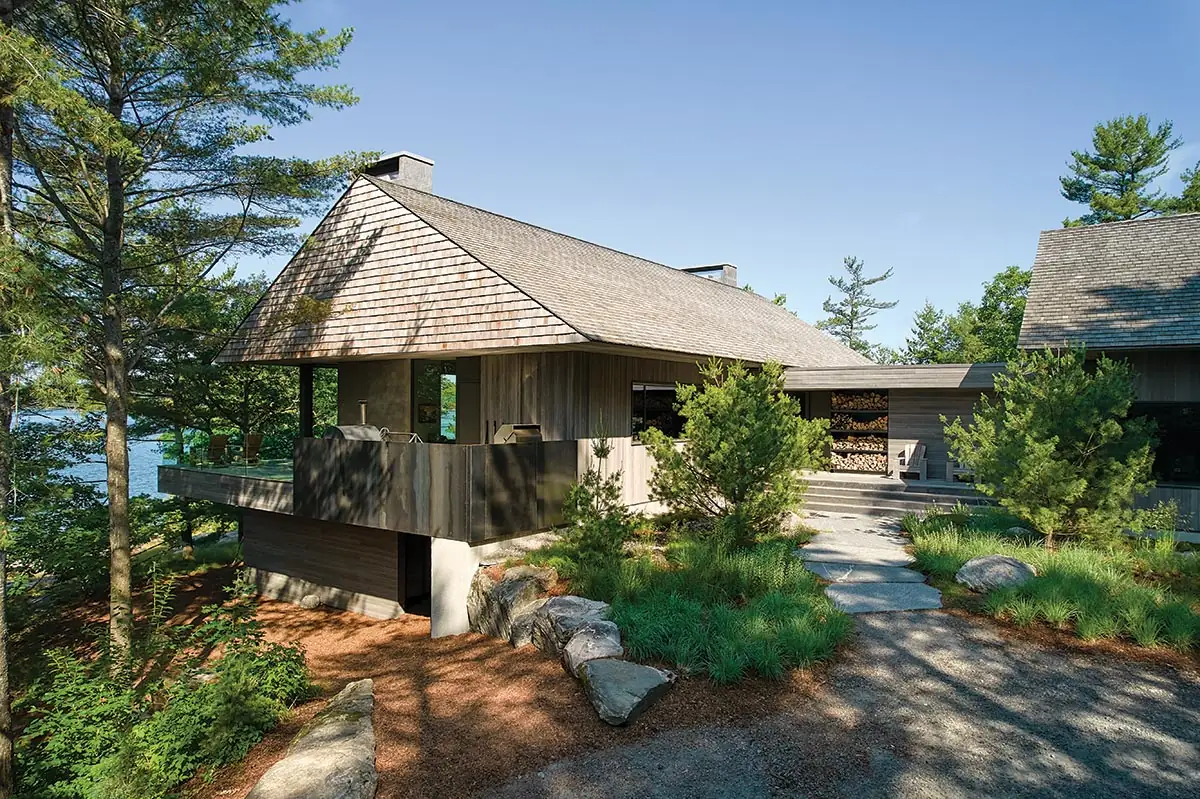
The L-shaped house (above) overlooks a lake, with the communal areas and deck (top of page) parallel to the shore. Photo © Shai Gil, click to enlarge.
The form draws on tradition: gabled-roof structures are typical here, says Akb principal Kelly Buffey. But Buffey and her firm, cofounded in 2004 with her husband, Robert Kastelic, added a twist. “Instead of treating the gable roof as a planar element, as it typically was, we’ve turned it into a mass.” The ends of the gable are clad in the same cedar shingles as the roof, so that, from the exterior, the gable reads as solid and continuous—a Monopoly house resting atop the rectangular volumes of the house.
Below this roof, the living spaces and screened-in porch stretch out harmoniously under a wood-clad ceiling that follows its form. A linear kitchen runs along the leeward side. The line of the ceiling does not match the line of the roof above—it’s offset in order to hit the central axis of the living room and porch, linking hefty concrete fireplaces at each end. The two gables are “intentionally different,” Buffey says, “to create different experiences as read from the outside versus the inside.”
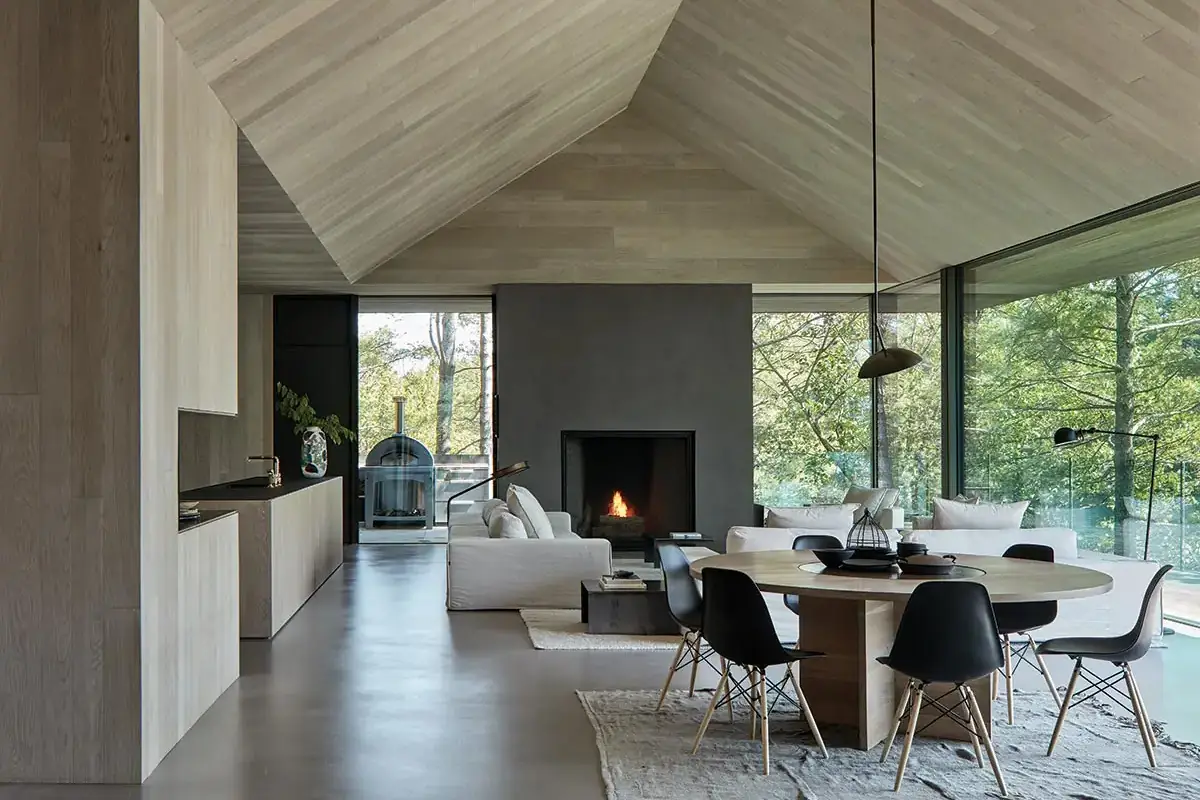
1
The communal space, clad in smoked European oak, includes a living/dining area (1), kitchen (2), and screened-in porch (3), flanked by fireplaces at each end. Photos © Shai Gil
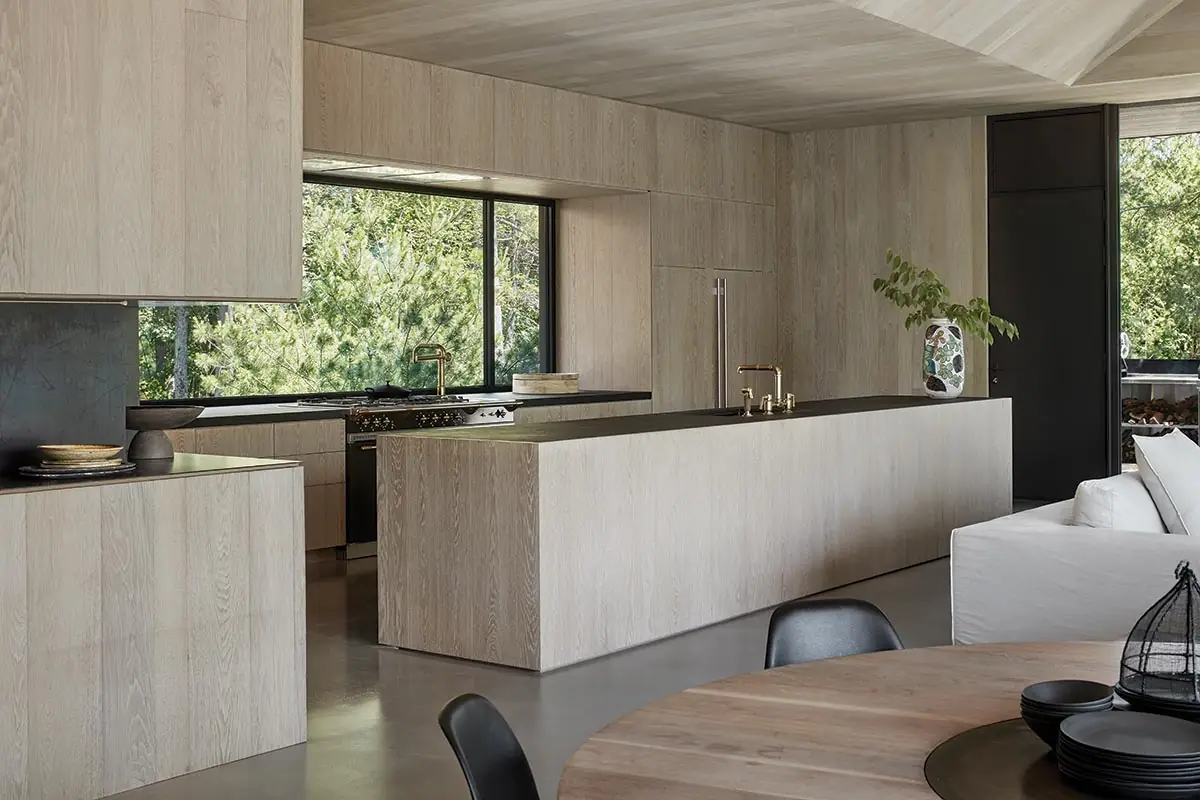
2
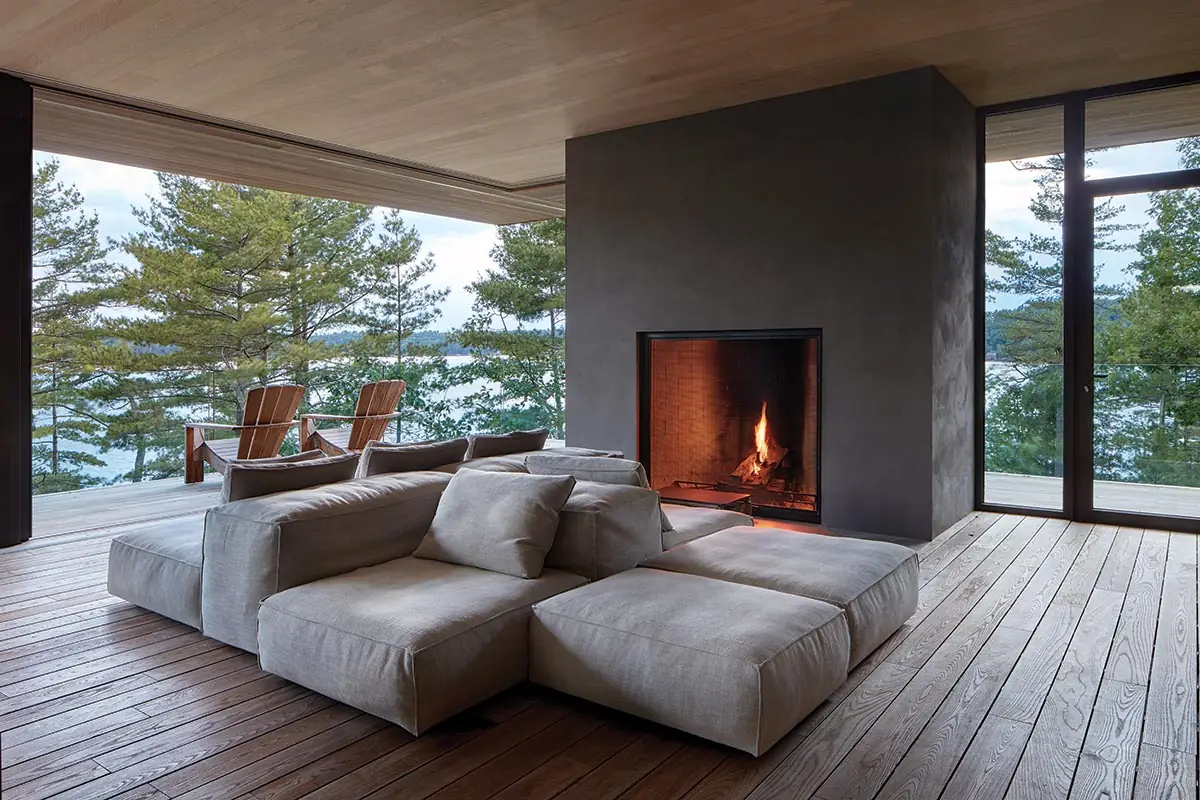
3
This compositional effort—and the complex, hidden web of framing that bridges the two offset gables—is almost invisible to the occupants of the house. But the house’s relationship to the landscape is clearly perceptible. In Muskoka, bedrock is right at the surface, creating a craggy landscape; Buffey explains that the local tradition is to “perch” houses on top of the rocks. In this house, the bedroom wing is built low between them. A large window in the primary bedroom frames a close-up vignette of a granite outcropping sprinkled with hardy pines. “You really are in the landscape,” Buffey asserts.
The interior finishes are, like the massing, deliberately modest. In the communal rooms, the walls and ceiling are wrapped in hand-brushed smoked European oak. This wood extends down the corridor into the bedroom wing, where the boards share a finish but vary in width. The result is “a field condition,” Buffey says, rather than the consistent rhythm one might expect from wood paneling.
The four bedrooms, lounge, and office reflect a similar attention to texture. Buffey, who is trained as an interior designer as well as an architect, chose unpainted Venetian plaster for the walls and the ceilings. The subtly textured surface evokes that of the rock just outside the windows. “We do think about the things that your hand touches, and how you react to that psychologically,” Buffey says.
For the bathrooms, Akb designed concrete vanities with integrated sinks. These, like the plaster walls, have slightly rough matte gray surfaces, enforcing the careful uniformity of the interior. But all the gray is balanced by handmade Mexican ceramic tiles that offer a subtle shimmer and a wavy, relaxed texture, very noticeable in a house where everything aligns. Here in the house’s most intimate moments, the architecture displays its characteristic fine balance between rusticity and polish.
Click plan to enlarge
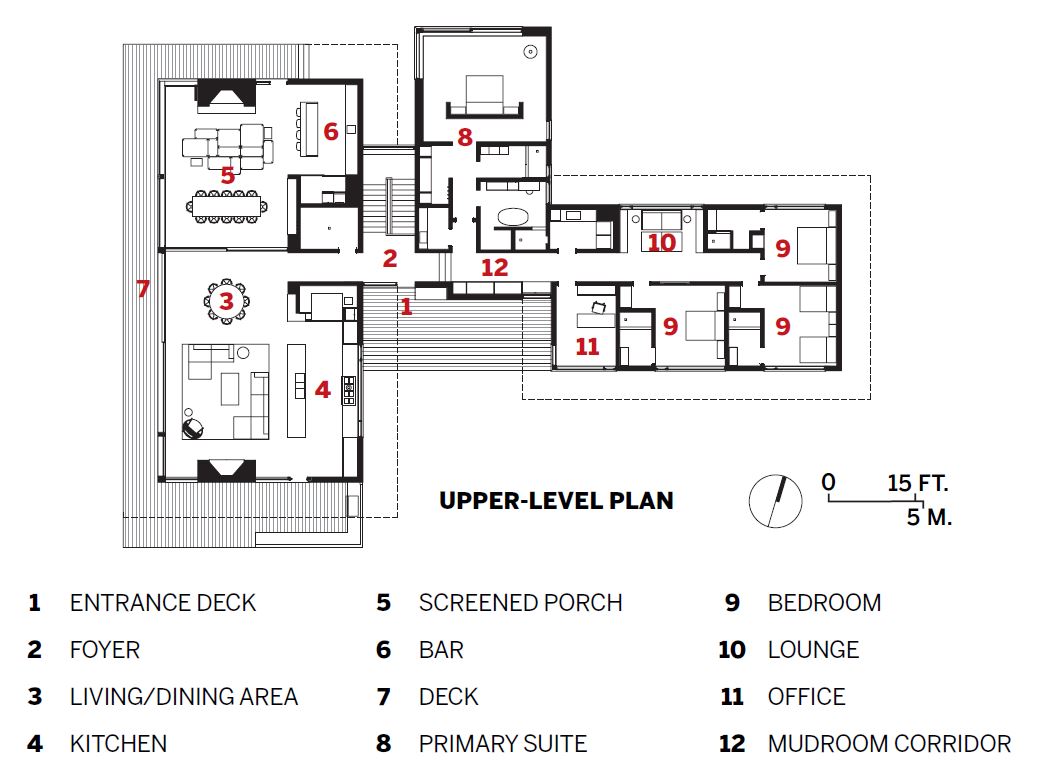
Credits
Architect:
Akb Architects — Kelly Buffey, design architect; Robert Kastelic, technical architect; Aaron Finbow, project architect
Engineers:
Moses Structural Engineers (structural)
General Contractor:
HLD Muskoka
Consultants:
Ashley Botten Design (interior design); Virginia Burt Designs (landscape)
Size:
7,500 square feet
Completion Date:
December 2022
Sources
Windows & Doors:
Reynaers
Glazing:
AGC; Pilkington
Operable Glass:
NanaWall
Interior Wood:
Moncer Specialty Flooring (walls & ceilings)
Concrete Floors:
Düraamen




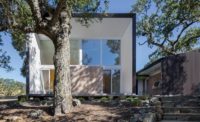
Post a comment to this article
Report Abusive Comment